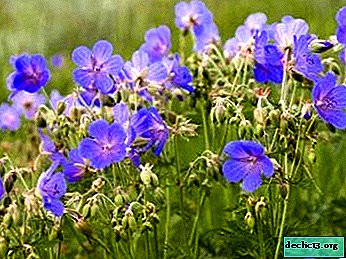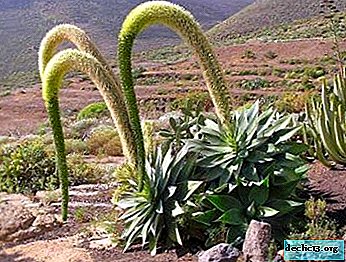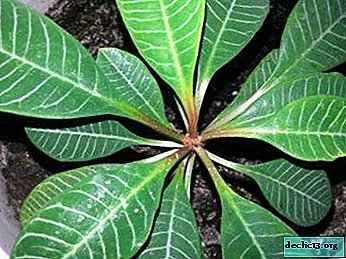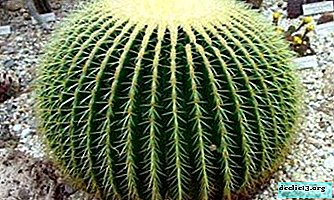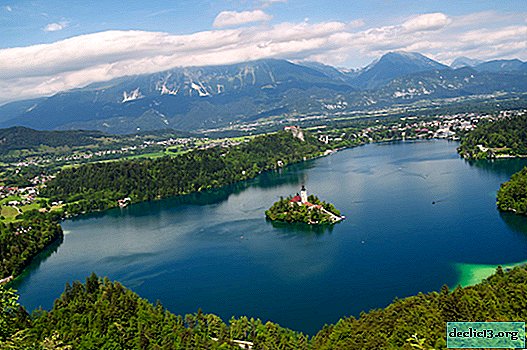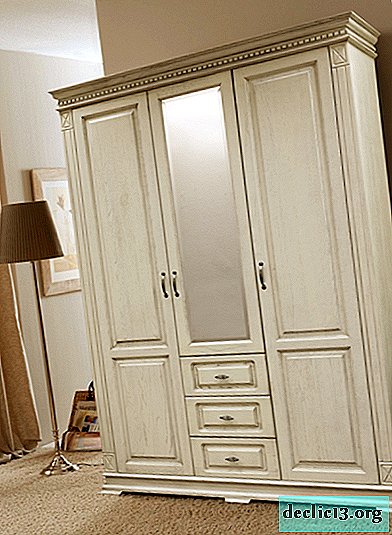Cute succulent haworthia: species, their names with description and photo
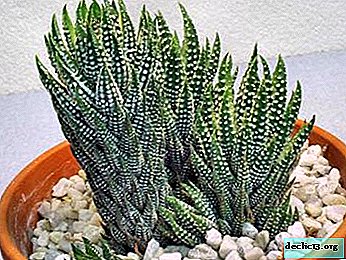 Haworthia serves as an original decoration of apartments, houses, offices, and in the warm season - gardens and loggias.
Haworthia serves as an original decoration of apartments, houses, offices, and in the warm season - gardens and loggias.
This plant is represented by a large number of species that differ from each other in external characteristics. The basic rules of care are quite simple and are the same for almost all varieties.
So, in the article you will learn more about haworthia and its types, see how they look. Also check out
how to carry out proper plant care.
Plant features
Haworthia is a plant of the Asphodel family. It is found in the wild in the arid regions of South Africa, on rocky, sandy or grassy slopes in the shade of trees and shrubs.
One of the plant's features is compactness. The haworthia stem is shortened or absent. Fleshy hard leaves form a basal rosette, the diameter of which does not exceed 10-15 centimeters. The height of the plant is most often 10-15 centimeters, individual species reach 20.
Haworthia refers to succulents. Thickened leaves of the plant have the ability to accumulate and retain moisture. They are narrow, elongated, pointed in the upper part. They have a light green or dark green color. A distinctive feature of all types of haworthia is tuberous growths on the leaves. In some varieties they are clearly visible, in others they are only felt to the touch.
Succulent flowers are small and inconspicuous, white or greenish in color. They are located on peduncles reaching a length of 50 centimeters to one meter. Collected in inflorescences - panicles. Flowers of all types of haworthia do not carry aesthetic value. So that the plant does not deplete, they are often cut off immediately after formation.
Reference! Haworthia is a long-lived plant. With proper care, she can delight with her exotic look for 20-30 years.Popular varieties and their photos
More than 150 species of haworthia are known.. Each year, breeders produce several new varieties.
Pearl-bearing (pearl)
Herbaceous succulent perennial. The stem is practically absent. Rigid oval-pointed leaves are strongly swollen at the bottom, narrowed and curved at the top. They have a dark green color, spikes on the edges. Reach in length up to eight centimeters. Form a basal outlet.
Bright white convex round growths reminiscent of pearls are randomly placed on both the upper and lower sides of the leaves. The inflorescence is located on a long peduncle and consists of small light green corollas.

Twisty
It has a small trunk, the height of which is up to 15 centimeters. Leaves of dark green color, completely covered with small tubercles. They have a convex lower surface. The length of the leaves is about two centimeters. Often this plant is called "aloe vera".

Scaphoid (cymbiformis)
Numerous shiny fleshy leaves are collected in a socket with a diameter of 10 centimeters. They differ in a bluish-green color and a scaphoid shape. Transparent stripes are visible at the tips. Glossy leaves are almost devoid of warty growths. The plant is able to produce many shoots and can reach a diameter of up to 20 centimeters. This is not the most capricious kind of haworthia.

Lympholia (limolifolia)
The leaf plates are stiff, fleshy, triangular, with a long pointed end and transverse warty stripes. They have a length of four centimeters. They make up a symmetrical outlet resembling a starfish on top. The plant is distinguished by a catchy pattern: the lines in the form of a wave on the upper side are almost mirrored on the lower side. The inflorescence consists of small white flowers.

Marginata
It differs in hard glossy leaves, due to which it resembles an artificial plastic flower. It grows quite slowly. Adult haworthia looks like a large, mostly solitary, outlet. Young leaves are light, located closer to the center of the outlet, over time they darken and are forced out to the periphery.
The plant is propagated mainly by seeds. Haworthia throws a powerful branched peduncle with a huge number of small flowers. Over time, in its place, a box with seeds is formed, which, when ripe, dries up and then opens.

Mix
Not a separate view. This is the name of the landing method. Several plants belonging to different species are contained in a common capacity. This composition looks very impressive. For this solution, it is best to choose unpretentious varieties of haworthia.

Drawn
Consists of dense basal rosettes with thick leaves. The trunk is missing. Lanceolate leaves are directed up, have a length of up to seven centimeters and a width of one and a half. Covered with white and green bulging warts. The flowers are a dull white hue, often scattered. The plant has no special decorative value..

Rainwardt
Reaches a height of up to 20 centimeters. The stalk is shortened. In a young plant, it is erect, bends and lays down with age. The leaves are pointed, triangular in shape. They are densely arranged in a spiral and form an elongated outlet. The top is smooth, the bottom has rows of transverse and longitudinal convex points of white color, which are clearly visible on a dark background. The length of the leaves is three centimeters, the width is up to one and a half. Read more about Haworthy Reinwardt, Pearl and Stripes here.

Retuza
Fleshy trihedral hard leaves are blunted at the edges. They are up to five centimeters long. Covered with transparent windows and light strokes. The upper part of the sheet plates is bent. Depending on the variety, their color varies from green to reddish green or brownish green. The leaves sit very tight, forming many outlets with a diameter of about 15 centimeters.
Important! This species reacts sharply to a lack of light.
Spherical
It is similar to pearl and has chaotic growths on the surface of leaf plates. The difference is longer, narrowed and pointed at the ends of the leaves. The main figure is hidden in the depths of the outlet.

Truncate
Representatives of this species grow in dense groups forming external rosettes. It is a small perennial without a stem. The diameter of the outlet does not exceed 70 millimeters. The leaves are blue-green, straight, measuring about 25 millimeters wide and up to 8 millimeters high. They have transparent veins.
Haworthia actively shoots up to 25 centimeters in length. Quite not whimsical in content, but extremely sensitive to waterlogging of the substrate - it can lose its roots. Requires balanced soil.

Cooperi
The herb of Haworthia Cooper can reach 20 centimeters in height. It has small, rough, light, round-shaped leaves with a length of about 25 millimeters, forming a dense rosette.
Representatives of this species are distinguished by the presence of windows serving for the passage of light. The plant needs constant sunbathing.The tops are depressed with the tops bent back, and the bottom is a scaphoid. At the tips of the leaves are long villi.

Wimii
The maximum height of the barrel when kept at home is 15 centimeters. The leaves are dark green in color, have a beveled keeled shape. Outwardly similar to aloe leaves.

General rules for home care
Regardless of the type of flower, measures for the care of any variety are almost the same. Growth and reproduction of indoor succulents have good indicators, but subject to a number of rules:
- It is best to place the plant on the windowsill of the east or west window.
- Provide diffuse lighting, avoiding direct sunlight.
- The optimum temperature in summer should be in the range from +18 to + 25 ° C, in winter + 10 ° C.
- In the spring-summer period, haworthy should be moderately watered once or twice a week, in winter - once every two weeks.
- It is impossible to moisten the soil too abundantly, as well as to allow the constant presence of water in the pan. The signal for irrigation is the complete drying of the upper layer of the earth by a third.
- Ventilate the room regularly.
- In winter, place the plant away from heating appliances.
- It is forbidden to spray haworthia.
- The plant needs a slightly alkaline or neutral substrate, well-permeable to moisture and drying out quickly. Ready soil for succulents and cacti is suitable, which can be purchased at a specialized store.
- Feed from May to August with a frequency of once a month. Use ready-made mineral fertilizers for succulents or ornamental foliage plants. To prepare an aqueous solution, take the concentration two times weaker than indicated on the package. Top dressing is allowed to be carried out only a few hours after the main watering, when the soil is well saturated with moisture.
- Transplant young specimens every two to three years, when the size of the pot ceases to correspond to the volume of the outlet. The frequency of the procedure for adult plants is two years.
Next, you can watch a video on how to care for the plant:
There are many types of haworthia, most of which are appreciated for their decorative effect. It is important to remember that the key to the health of any plant is proper care. One of the easiest to maintain species suitable for beginners is haworthia cymbiformis. With certain skills, you can create a whole mix, including representatives of different varieties.

